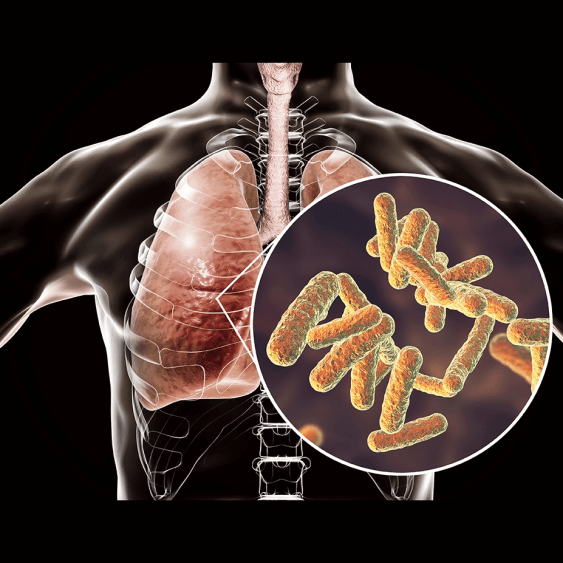This session discusses how it is in a day in a busy pediatric infectious diseases’ clinic. The session began by mentioning that several calls are received on enquiries for assistance for different case scenarios. Whether the queries were irrational or rational, assistance was provided. A few of the challenging cases scenarios were discussed which started with a query on the use of prophylactic antibiotics for trauma cases, which was suggested that it did not make any difference according to existing literature.
A case on a racoon seizing in the vicinity of a residential area was a concern as rabies was suspected, however it turned out to be canine distemper virus according to the state epidemiologist, which was a new learning experience.
A 14-year-old girl who reported ingesting contaminated material presented with fever, nausea, headache, red eyes, and erythematous maculopapular rash. Most of the polls went for Listeriosis as the diagnosis but just a virus was the correct answer. This was explained that based on the presenting symptoms probability for a virus infection was more accurate rather than arriving at a diagnosis based on the events conducted by the patients.
A 7-year-old boy presented with headache and vomiting, three days prior to admission (PTA). He was taken to an immediate care center two days PTA where rapid strep test was negative and was diagnosed for viral syndrome. One day PTA he was admitted in the emergency department where he was discharged after tolerating oral fluids. Day of admission at the emergency department, worsening of symptoms was reported though neurological exam was normal. Magnetic resonance imaging (MRI) scan revealed a brain abscess on the frontal lobe. The gram stain of the brain abscess specimen showed high white blood count, gram positive cocci and few gram-negative bacilli. Vancomycin, ceftriaxone, and metronidazole were started. Culture test showed presence of polymicrobial isolates that included Streptococcus intermedius, Aggregatibacter aphrophilus and Parvimonas micra. The patient improved well after his operation and was continued with ceftriaxone and metronidazole for 6 weeks. The bubble study was voted as the other diagnostic study to be done for this case. Which was eventually conducted that indicated a right-to left shunt. This case highlighted that brain abscess are often polymicrobial therefore antibiotic prescriptions should be conducted accordingly.
A 20-day old preemie with positive blood culture of Staphylococcus caprae. In this case isolates were identified by matrix-assisted laser desorption ionization–time-of-flight mass spectrometry (MALDI-TOF MS) for which this was contradicted as a pseudo-outbreak. Hence it was suggested that pseudo-outbreaks should be considered when clusters of positive sterile cultures with an unusual organism are identified. Overall, it was agreed that the recent microbiological testing tools were of great advantage in terms of rapid diagnosis, were more sensitive and specific and had antimicrobial stewardship opportunities.
An 8-year-old girl with fever and multifocal soft tissue infection on her limbs were discussed. The child was empirically started on vancomycin and improved, however MRI scan revealed evidence of multifocal infection involving soft tissues and the bones. Cell-free microbial DNA sequencing demonstrated that the child had group streptococcus bacteremia cellulitis.
An 8-year-old girl with fever, headache and rash was not improving with doxycycline as she was presumed to be having tick bone rickettsial disease. Bone marrow test findings revealed monocytes with degenerating red blood cells (RBC) and lymphocytes. This was direct evidence of hemophagocytic lymphohistiocytosis (HLH). It was further discussed that clinical criteria to HLH were nonspecific and unreliable, therefore discovering biomarkers for HLH would be helpful to accurately diagnose HLH. The child was then started on steroids, and in a day or two the child improved and has been improving ever since. The case highlighted that HLH is often triggered by an infection and should be suspected in cases showing cytopenias, elevated ferritin, low fibrinogen or on incidents when viral or bacterial infections fail to improve despite appropriate medication.
A 4-year-old boy with adenovirus and gastrointestinal virus had diarrhea with blood for several days along with dehydration. Rehydration improved his symptoms for a brief period but eventually the symptoms worsened. His parameters met the criteria for HLH so was put on steroids, etoposide and anakinra, which was not helpful as his adenovirus viral load increased and the child died due to formalin hepatic failure. It was then concluded that in such cases an accurate diagnosis could be made if appropriate biomarkers were identified.
European Society for Paediatric Infectious Diseases (ESPID) 41st Annual Meeting 2023, 8th May – 12th May 2023, Lisbon, Portugal.



